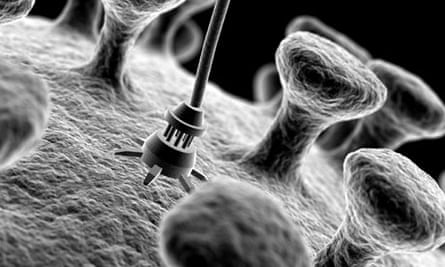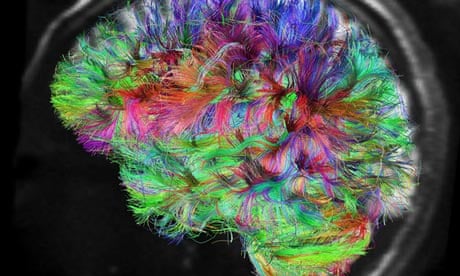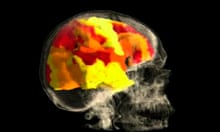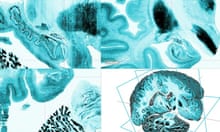You've seen the headlines: This is your brain on love. Or God. Or envy. Or happiness. And they're reliably accompanied by pictures of colour-drenched brains – scans capturing Buddhist monks meditating, addicts craving cocaine, and students choosing Coke over Pepsi. The media – and even some neuroscientists, it seems – love to invoke the neural foundations of human behaviour to explain everything from the Bernie Madoff financial fiasco to slavish devotion to our iPhones, the sexual indiscretions of politicians, conservatives' dismissal of global warming, and an obsession with self-tanning.
Brains are big on campus, too. Take a map of any major university and you can trace the march of neuroscience from research labs and medical centres into schools of law and business and departments of economics and philosophy. In recent years, neuroscience has merged with a host of other disciplines, spawning such new areas of study as neurolaw, neuroeconomics, neurophilosophy, neuromarketing and neurofinance. The brain has wandered into such unlikely redoubts as English departments, where professors debate whether scanning subjects' brains as they read passages from Jane Austen novels represents: a) a fertile inquiry into the power of literature, or b) a desperate attempt to inject novelty into a field that has exhausted its romance with psychoanalysis and postmodernism. As a newly minted cultural artefact, the brain is portrayed in paintings, sculptures and tapestries and put on display in museums and galleries. As one science pundit noted, "if Warhol were around today, he'd have a series of silkscreens dedicated to the cortex; the amygdala would hang alongside Marilyn Monroe".
Clearly, brains are hot. The prospect of solving the deepest riddle humanity has ever contemplated – itself – by studying the brain has captivated scholars and scientists for centuries. But never before has the brain so vigorously engaged the public imagination. The prime impetus behind this enthusiasm is a form of brain imaging called fMRI, or functional magnetic resonance imaging, an instrument that measures brain activity and converts it into the now iconic vibrant images one sees in the science pages of the daily newspaper.
As a tool for exploring the biology of the mind, neuroimaging has given brain science a strong cultural presence. As one scientist remarked, brain images are now "replacing Bohr's planetary atom as the symbol of science". With its implied promise of decoding the brain, it is easy to see why brain imaging would beguile almost anyone interested in pulling back the curtain on the mental lives of others: politicians hoping to manipulate voter attitudes, agents of the law seeking an infallible lie detector, marketers tapping the brain to learn what consumers really want to buy, addiction researchers trying to gauge the pull of temptations, and defence attorneys fighting to prove that their clients lack malign intent or even free will.
The problem is that brain imaging cannot do any of these things – at least not yet.
Author Tom Wolfe was characteristically prescient in when he wrote of fMRI in 1996, just a few years after its introduction: "Anyone who cares to get up early and catch a truly blinding 21st-century dawn will want to keep an eye on it." Now, we can't look away.
Why the fixation? First, of course, there is the very subject of the scans: the brain itself, the organ of our deepest self. More complex than any structure in the known cosmos, the brain is a masterwork of nature endowed with cognitive powers that far outstrip the capacity of any silicon machine built to emulate it. Containing roughly 80bn brain cells, or neurons, each of which communicates with thousands of other neurons, the 3lb universe cradled between our ears has more connections than there are stars in the Milky Way. How this enormous neural edifice gives rise to subjective feelings is one of the greatest mysteries of science and philosophy.
Brain scan images are not what they seem. They are not photographs of the brain in action in real time. Scientists can't just look "in" the brain and see what it does. Those beautiful colour-dappled images are actually representations of particular areas in the brain that are working the hardest – as measured by increased oxygen consumption – when a subject performs a task such as reading a passage or reacting to stimuli, such as pictures of faces. The powerful computer located within the scanning machine transforms changes in oxygen levels into the familiar candy-coloured splotches indicating the brain regions that become especially active during the subject's performance. Despite well-informed inferences, the greatest challenge of imaging is that it is very difficult for scientists to look at a fiery spot on a brain scan and conclude with accuracy what is going on in the mind of the person.

Years ago, as the 2008 presidential election season was gearing up, a team of neuroscientists from UCLA sought to solve the riddle of the undecided, or swing, voter. They scanned the brains of swing voters as they reacted to photos and video footage of the candidates. The researchers translated the resultant brain activity into the voters' unspoken attitudes and, together with three political consultants from a Washington DC-based firm called FKF Applied Research, presented their findings in the New York Times in an op-ed titled, "This is Your Brain on Politics". Readers could view scans dotted with tangerine and neon-yellow hotspots indicating regions that "lit up" when the subjects were exposed to images of Hillary Clinton, John Edwards, Rudy Giuliani, and other candidates. Revealed in these activity patterns, the authors claimed, were "some voter impressions on which this election may well turn". Among those impressions was that two candidates had utterly failed to "engage" with swing voters. Who were these unpopular politicians? John McCain and Barack Obama, the two eventual nominees for president.
University press offices are notorious for touting sensational details in their media-friendly releases: here's a spot that lights up when subjects think of God ("Religion centre found!") or researchers find a region for love ("Love found in the brain"). Neuroscientists themselves sometimes refer disparagingly to these studies as "blobology", their tongue-in-cheek label for studies that show which brain areas become activated as subjects experience x or perform y task.
Skilled science journalists cringe when they read accounts claiming that scans can capture the mind itself in action. Serious science writers take pains to describe quality neuroscience research accurately. Indeed, an eddy of discontent is forming. "Neuromania", "neurohubris" and "neurohype" – "neuro-bollocks", if you're a Brit – are just some of the labels that have been bandied about, sometimes by frustrated neuroscientists themselves.
Reading too much into brain scans can become truly consequential when real-world concerns hang in the balance. Consider the law. When a person commits a crime, who is at fault: the perpetrator or his brain? Now, of course, this is a false choice. If biology has taught us anything, it is that "my brain" versus "me" is a false distinction. Still, if biological roots can be identified – and better yet, captured on a brain scan as juicy blotches of colour – it is too easy for non-professionals to assume that the behaviour under scrutiny must be "biological" and therefore "hardwired", involuntary or uncontrollable. Criminal lawyers, no surprise, are increasingly drawing on brain images supposedly showing a biological defect that "made" their clients commit murder.
Looking to the future, some neuroscientists envisage a dramatic transformation of criminal law. Neuroscientist David Eagleman, for one, welcomes a time when "we may some day find that many types of bad behaviour have a basic biological explanation [and] eventually think about bad decision-making in the same way we think about any physical process, such as diabetes or lung disease". As this comes to pass, he predicts, "more juries will place defendants on the not-blameworthy side of the line". But is this the correct conclusion to draw from neuroscience data? After all, if every behaviour is eventually traced to detectable correlates of brain activity, does this mean we can one day write off all unwanted behaviour on a don't-blame-me-blame-my-brain theory of crime?
Scientists have made great strides in reducing the organisational complexity of the brain from the intact organ to its constituent neurons, the proteins they contain, genes, and so on. Using this template, we can see how human thought and action unfold at a number of explanatory levels, working upwards from the most basic elements. At one of the lower tiers in this hierarchy is the neurobiological level, which comprises the brain and its constituent cells. Genes direct neuronal development, neurons assemble into brain circuits. Information processing, or computation, and neural network dynamics hover above. At the middle level are conscious mental states, such as thoughts, feelings, perceptions, knowledge and intentions. Social and cultural contexts, which play a powerful role in shaping our mental contents and behaviour, occupy the highest landings of the hierarchy.
According to neuroscientist Sam Harris, inquiry into the brain will eventually and exhaustively explain the mind and, hence, human nature. Ultimately, he says, neuroscience will – and should –dictate human values. Semir Zeki, the British neuroscientist, and legal scholar Oliver Goodenough hail a "'millennial' future, perhaps only decades away [when] a good knowledge of the brain's system of justice and of how the brain reacts to conflicts may provide critical tools in resolving international political and economic conflicts". No less a towering figure than neuroscientist Michael Gazzaniga hopes for a "brain-based philosophy of life" based on an ethics that is "built into our brains. A lot of suffering, war and conflict could be eliminated if we could agree to live by them more consciously".
The brain is said to be the final scientific frontier, and rightly so in our view. Yet, in many quarters, brain-based explanations appear to be granted a kind of inherent superiority over all other ways of accounting for human behaviour. We call this assumption "neurocentrism" – the view that human experience and behaviour can be best explained from the predominant or even exclusive perspective of the brain. From this popular vantage point, the study of the brain is somehow more "scientific" than the study of human motives, thoughts, feelings and actions. By making the hidden visible, brain imaging has been a spectacular boon to neurocentrism.
Consider addiction. "Understanding the biological basis of pleasure leads us to fundamentally rethink the moral and legal aspects of addiction," writes neuroscientist David Linden. This is popular logic among addiction experts; yet, to us, it makes little sense. Granted, there may be good reason to reform the way the criminal justice system deals with addicts, but the biology of addiction is not one of them. Why? Because the fact that addiction is associated with neurobiological changes is not, in itself, proof that the addict is unable to choose. Just look at American actor Robert Downey Jr. He was once a poster boy for drug excess. "It's like I have a loaded gun in my mouth and my finger's on the trigger, and I like the taste of gunmetal," he said. It seemed only a matter of time before he'd meet a horrible end. But Downey Jr entered rehab and decided to change his life. Why did Robert Downey Jr use drugs? Why did he decide to stop and to remain clean and sober? An examination of the brain, no matter how sophisticated, cannot tell us that at this time, and probably never will. The key problem with neurocentrism is that it devalues the importance of psychological explanations and environmental factors, such as familial chaos, stress and widespread access to drugs in sustaining addiction.
New neuroenthusiasms are endemic to modern brain science, seemingly sprouting up on a daily basis. Aspiring entrepreneurs now bone up on neuromanagement books such as Your Brain and Business: The Neuroscience of Great Leaders, which advises nervous CEOs "to be aware that anxiety centres in the brain connect to thinking centres, including the PFC [prefrontal cortex] and ACC [anterior cingulate cortex]". The mind is ephemeral and mysterious, but the brain is concrete. It promises to yield objective findings that will harden even the softest science, or so the dubious logic goes. Parents and teachers are easy marks for "brain gyms", "brain-compatible education" and "brain-based parenting", not to mention dozens of other techniques. But, mostly, these slick enterprises merely dress up good advice or repackage bromides with neuroscientific findings that add nothing to the overall programme. As one cognitive psychologist quipped: "Unable to persuade others about your viewpoint? Take a Neuro-Prefix – influence grows or your money back."
Ours is an age in which brain research is flourishing – a time of truly great expectations. Yet it is also a time of mindless neuroscience that leads us to overestimate how much neuroscience can improve legal, clinical and marketing practices, let alone inform social policy. The naive media, the slick neuroentrepreneur, and even the occasional overzealous neuroscientist exaggerate the capacity of scans to reveal the contents of our minds, exalt brain physiology as inherently the most valuable level of explanation for understanding behaviour, and rush to apply underdeveloped, if dazzling, science for commercial and forensic use.
The neurobiological domain is one of brains and physical causes; the psychological domain is one of people and their motives. Both are essential to a full understanding of why we act as we do. But the brain and the mind are different frameworks for explaining human experience. And the distinction between them is hardly an academic matter: it bears crucial implications for how we think about human nature, as well as how to best alleviate human suffering.

The future of neuroscience
1. Human Connectome Project
Nine US insitutions are involved in this $38.5m project to map the human brain. The aim is to elucidate "the neural pathways that underlie brain function and behaviour". The project uses an innovative technique called diffusion MRI which measures the movement of water molecules to map pathways between the brain's neurons. It is mapping 1,200 healthy adults including many twins – analysing their connectomes and genetic data should show the contributions of genes and environment to the wiring of the brain. According to one of the principal investigators, Van J Wedeen, "our objective is to see stuff that has never been seen before".
2. Bigbrain Project
Researchers at Montreal Neurological Institute and Heinrich Heine University Düsseldorf have created the highest resolution 3D digital model of the human brain. MRI scans only show details down to around a millimetre in size, but the BigBrain scans resolve down to 20 microns – the thickness of the 7,400 slices of a 65-year-old woman's brain that had been preserved in paraffin. The sliceswere scanned by computer and rebuilt into a 3D model. The project is part of the EU-funded €500m Human Brain Project.
3. Brain Nanotechnology
The aim is to build circuits that mimic brain functions – opening up the possibility of brain prostheses or even synthetic brains. A lot of attention is focused on fabricating carbon nanotubes – which can transmit electrical signals at 10 times the speed of silicon chips.
4. Optogenetics
This technique combines optics and genetics to control neurons. Genes are inserted that are responsive to light, then the host cells can be controlled via fibreoptics. One leading scientist in this field is Ed Boyden at MIT, who has restored vision in blind mice. Scientists at the Deisseroth Lab at Stanford University have adapted rats' brains to respond to coloured light, allowing them to control the rats' movement. There are hopes that these therapies have potential to treat blindness, Alzheimer's and Parkinson's in humans.






Comments (…)
Sign in or create your Guardian account to join the discussion